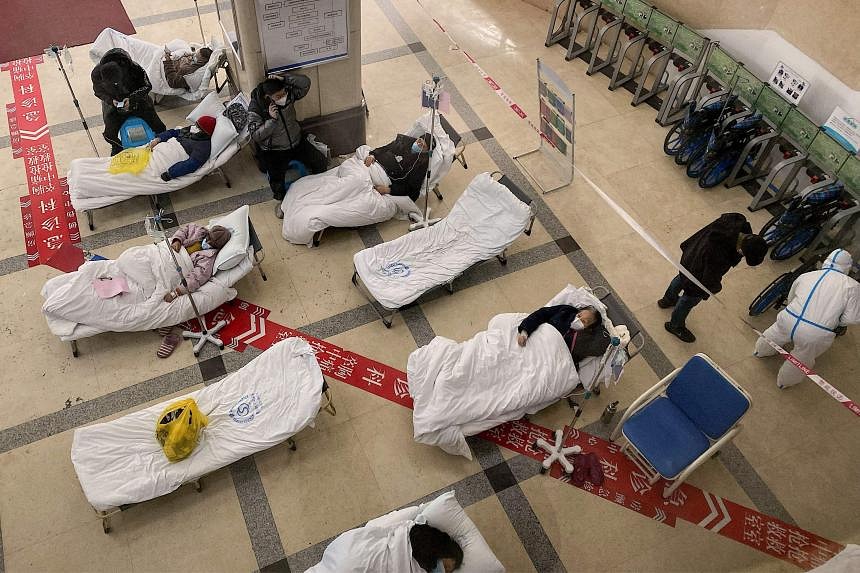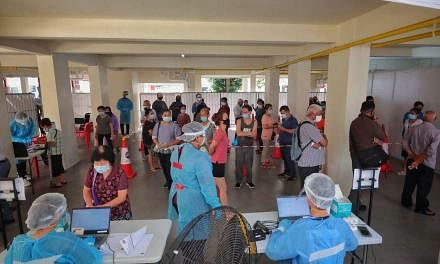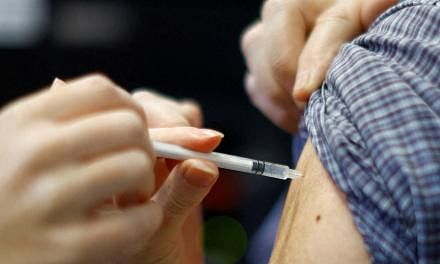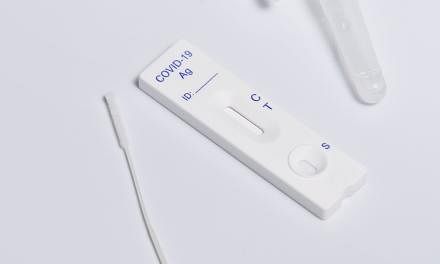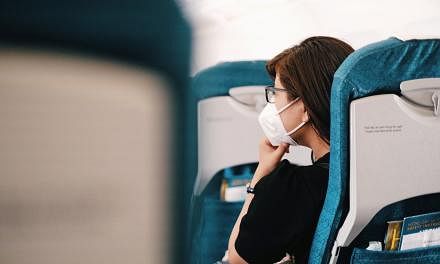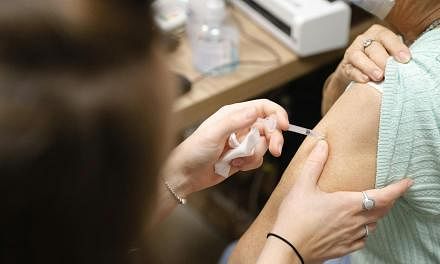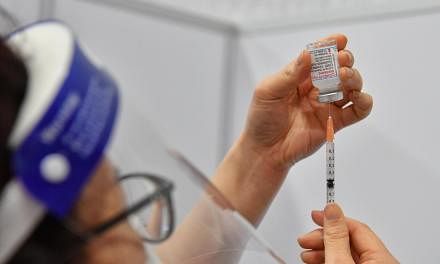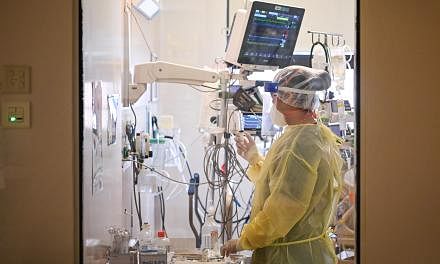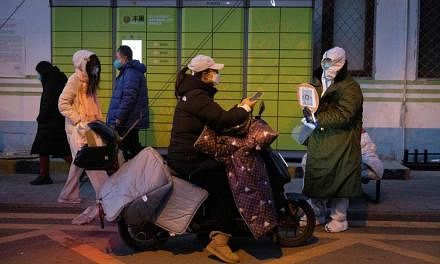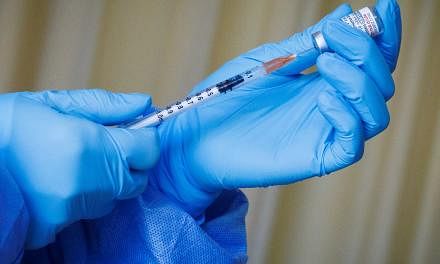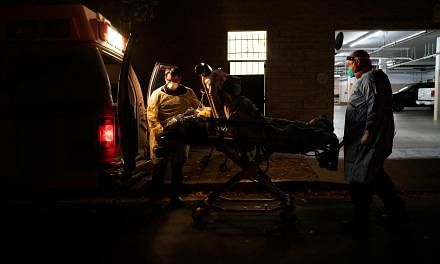BEIJING - Two weeks after China abruptly lifted its long-held zero-Covid restrictions, the health authorities are scrambling to expand critical care capacity to deal with the surge in infections, which has already led to long lines at under-resourced hospitals.
Public health experts warn that attempting to build up resources within a short period of time will be a monumental challenge, and there is serious concern that the tsunami of cases could overwhelm current intensive care unit (ICU) capacity, leading to unnecessary deaths.
The government said earlier this month that China currently has 138,100 intensive care beds, or about 10 per 100,000 people.
It has stepped up its intensive care resources considerably, since China had only 57,160 intensive care beds in 2019, according to figures from the National Health Commission (NHC).
In comparison, Singapore had 11.4 critical care beds per 100,000 people, according to a 2020 study in the Critical Care Medicine journal.
The figure is much higher in other developed nations such as the US (25.8) and Germany (33.9), a 2020 study from the Organisation for Economic Cooperation and Development shows.
China’s critical care push involves converting existing mass quarantine facilities into temporary hospitals to treat patients, said officials.
In rural areas, county hospitals have also been ordered to beef up ICU beds and staffing levels by the end of December, according to a government directive.
“This is going to be a serious challenge, especially in rural areas. There will not be enough ICU beds and staff to run them,” said Professor Jin Dongyan, a virologist from the University of Hong Kong.
This race against time comes as new modelling points to a grim picture with an expected high number of deaths, now that China is allowing the virus to spread unabated.
Shanghai’s infectious diseases expert Zhang Wenhong estimates that the reproduction, or R, number that measures a virus’ transmissibility during this viral wave is between 16 and 18, which means one person with Covid-19 could potentially infect 18 others.
As many as 248 million people could have been infected in the first 20 days of December, based on minutes of an NHC internal meeting on Wednesday that had been circulating on Chinese social media. On Tuesday alone, an estimated 37 million people contracted the virus, according to the minutes.
Instead of trying to flatten the curve, China appears to be trying to build up herd immunity quickly, by letting the virus rip.
A study by the Institute of Health Metrics and Evaluation based in the University of Washington projected that cases would peak in April, resulting in 323,000 deaths and potentially well over one million fatalities in 2023.
Institute director Christopher Murray said populations at greatest risk in the world are those that have avoided a lot of transmission and have gaps in vaccination. “And that is exactly the case for China,” he said.

Although the country boasts a high vaccination rate of 90 per cent, the comparatively low effectiveness of Chinese-made inactivated vaccines against the Omicron variant and the long lapse since most people received their last jab make 80 per cent of the population vulnerable to the virus, Dr Murray said.
Many Chinese had previously been inoculated or received a booster shot a year ago, and studies have shown that protection from a third shot wanes after three months, while antibodies from inactivated vaccines are much lower than those induced by mRNA vaccines.
Another modelling done by the University of Hong Kong that has yet to be peer-reviewed projects around 960,000 deaths over December and January if there are no interventions, such as giving a fourth jab to the population, boosting access to antiviral treatment and implementing social measures to curb transmission.
Yet another, by London-based life science analytics company Airfinity, puts the death toll at between 1.3 million and 2.1 million, based on China’s vaccination gap and lack of hybrid immunity. This is extrapolated from Hong Kong’s severe outbreak early this year that resulted in the city having the highest Covid-19 death rate in the world.
But it would be hard to ascertain the true extent of deaths related to Covid-19. The NHC’s official tally puts the number of fatalities from Covid-19 at 5,241 on Wednesday.
China is now recording a Covid-19 death only if it is caused by pneumonia or respiratory failure brought on by the virus. Deaths from other underlying diseases will not be classified as such, Dr Wang Guiqiang, an adviser to the NHC, said on Tuesday.
China has reported only six deaths between Dec 7, when it lifted Covid-19 curbs, and Dec 21.
But when The Straits Times visited a funeral home east of Beijing last week, there was a succession of black minivans used as hearses seen streaming into the compound. Security had been posted around entrances to prevent anyone who did not appear to be a next of kin from entering the premises.

China could experience three Covid-19 waves over the next three months, its chief epidemiologist Wu Zunyou said last Saturday. Other Chinese experts predict that as many as 80 per cent to 90 per cent of the population could eventually be infected.
Just 40 per cent of those over the age of 80 have had a booster shot, and only 76.6 per cent have received at least one jab. Last week, the health authorities rolled out a second booster shot for those aged 60 and above, as well as those considered vulnerable, as they ramp up vaccinations.

There are signs that hospitals are struggling to cope.
Product designer Croco Chen said she waited two hours to see a doctor in Chengdu for severe tonsillitis after she tested positive for Covid-19.
“The people waiting were mostly parents with children who kept crying non-stop, which made everything feel more stressful. I overheard a dabai (a medical worker in full personal protective equipment) telling his colleague that he needed a break after examining 70 patients in a row, but more people just kept streaming in,” she said.
Miss Chen, 26, said she was discharged after three days because her condition was considerably mild, and nurses told her they needed to free up bed space.
The problem is so acute that some local governments have begun issuing notices urging retired medical staff to return to work in order to make up the staffing shortfall, according to reports in the Chinese media.
The authorities in Guangzhou said in a media briefing on Monday that they have re-employed 960 retired medical staff since the start of December.
Many people infected with Covid-19 defy the government’s current advice to recover at home, or head to community health centres for treatment, and instead go first to their local hospitals, sapping existing medical resources, said Prof Jin.
“People do so for a variety of reasons, but some of this is because of deep-seated thinking that the best medical care can be found only in big hospitals,” he said.
Shanghai’s Dr Zhang said only 1 per cent of patients needed to be sent to hospitals, and that ideally, doctors at community health centres should decide which patients need hospital care.
“If this community level screening is not done well, Shanghai’s current ICU capacity in its secondary and tertiary hospitals won’t be sufficient, they will be overwhelmed – it is the same for the rest of the country,” warned Dr Zhang during a briefing for medical personnel in Shanghai on Sunday.

The health authorities in Beijing, meanwhile, have ordered 13 pharmaceutical companies to boost production of medicine and antigen test kits that are in short supply. E-commerce platforms have also ramped up purchase of Covid-19-related drugs from outside China. But many pharmacy shelves remained empty.
In some areas, residents have organised themselves into groups, offering to share medicine with those unable to procure supplies.
Housekeeper Cheng Yumei, 43, who is in one such group in Tongzhou in south-east Beijing, said she had been sharing excess medication with sick neighbours.
“My sister and I had medicine and test kits that others shared with us but since our symptoms were mild, we didn’t need all of it, so we passed them to others who feel worse.
“A lot of those who live around here are delivery riders and couriers so every day that they don’t work, they don’t get paid. But how are you to ride around in minus 2 deg C weather if you have a high fever?”
Experts say China needs to urgently speed up vaccinating its population, stock up on antiviral medication and therapeutics, and slow down transmission by reintroducing social distancing measures to ease the burden on hospitals and reduce the projected death toll.
But it is unclear what the NHC’s plans and progress are on these fronts. It did not respond to queries by The Straits Times.
World Health Organisation chief Tedros Adhanom Ghebreyesus on Wednesday appealed for China to provide more information on the severity of its outbreak, especially hospital and ICU admissions, so that the UN health body could “make a comprehensive risk assessment of the situation on the ground”.
The Chinese Foreign Ministry responded the next day that China has been releasing information, including to the WHO, in an “open and transparent manner”.
